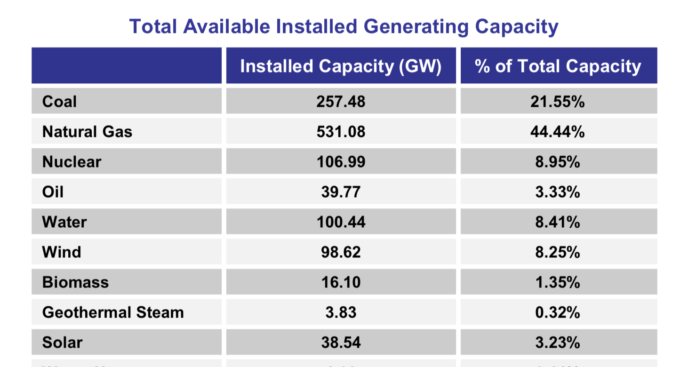Solar, wind and hydropower provided 85.7% of new U.S. electric generating capacity during the first two months of 2020 – notably more than natural gas.
The Federal Energy Regulatory Commission’s (FERC) latest monthly Energy Infrastructure Update report (with data through Feb. 29) reveals that wind and solar are on track to each provide more new generating capacity than natural gas over the next three years. Moreover, the mix of all renewables (i.e., biomass, geothermal, hydropower, solar, wind) will add nearly 51 GW of new generating capacity to the nation’s total by February 2023 – while that of natural gas, coal, oil and nuclear power combined will actually decrease by almost 2 GW.
During the first two months of this year, 38 new units of solar totaling 987 MW were added to the U.S.’ total energy generating capacity, accompanied by four units of wind (303 MW) and three units of hydropower (13 MW). By comparison, FERC reported only 218 MW (or seven units) of natural gas. There were no new capacity additions by coal, oil, nuclear, biomass or geothermal energy.
Renewable energy sources now account for 22.6% of the nation’s total available installed generating capacity and continue to expand their lead over coal (20.62%). The generating capacity of just wind and solar is now at 12.58% of the nation’s total – and that does not include distributed solar.
In addition, FERC data suggest that renewables’ share of generating capacity should increase significantly over the next three years. “High probability” generation capacity additions for wind, minus anticipated retirements, reflect a projected net increase of 26,167 MW, while solar is foreseen growing by 22,593 MW. By comparison, net growth for natural gas will be only 21,822 MW.
“The impacts of the global coronavirus crisis and the wild gyrations in international oil prices have yet to be reflected in FERC’s data,” says Ken Bossong, executive director of the SUN DAY Campaign.
“However, renewables – especially wind and solar – still seem poised to continue their rapid growth toward eventual market dominance,” he adds.
To read FERC’s full Energy Infrastructure Update report, click here.




